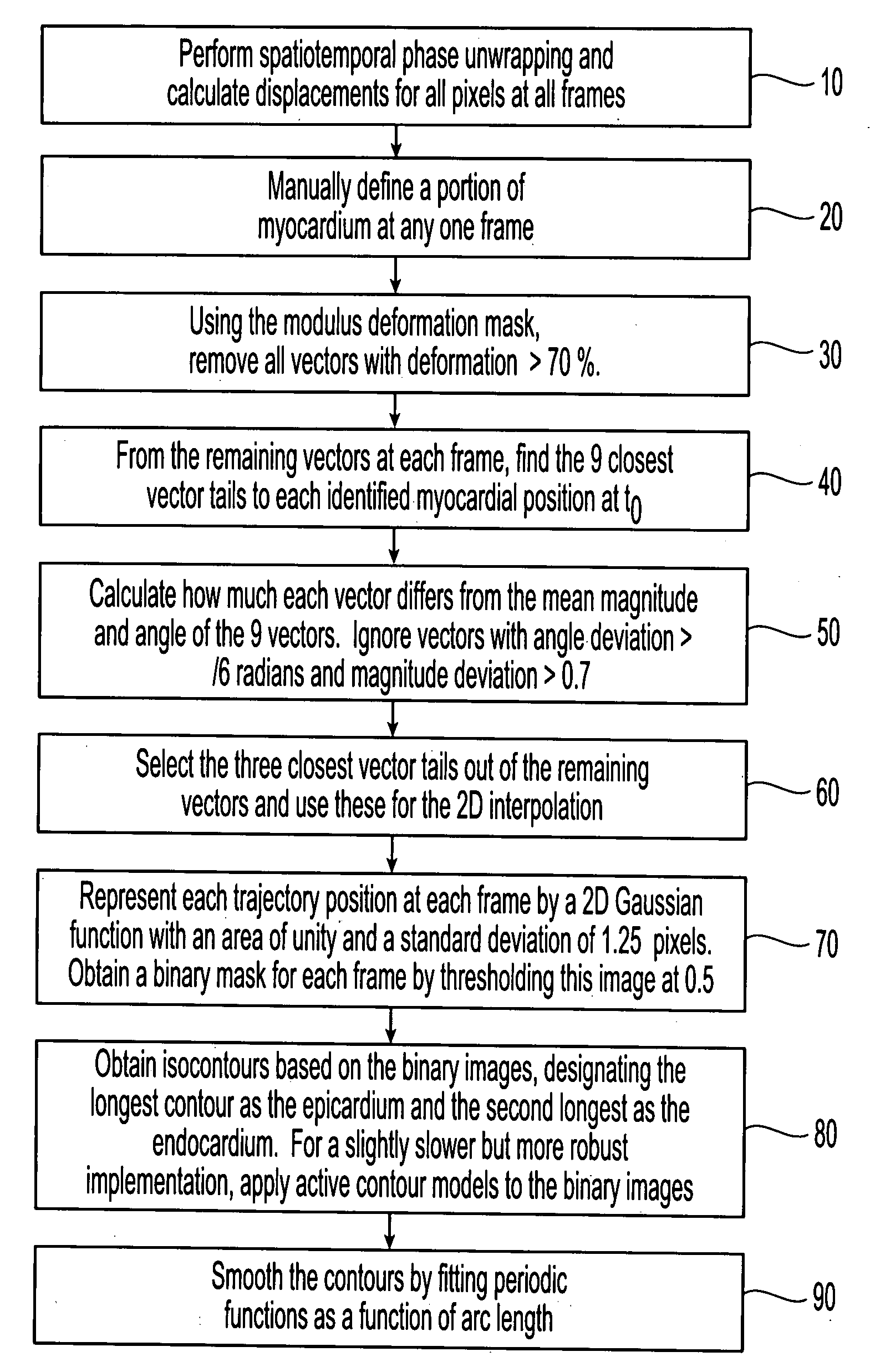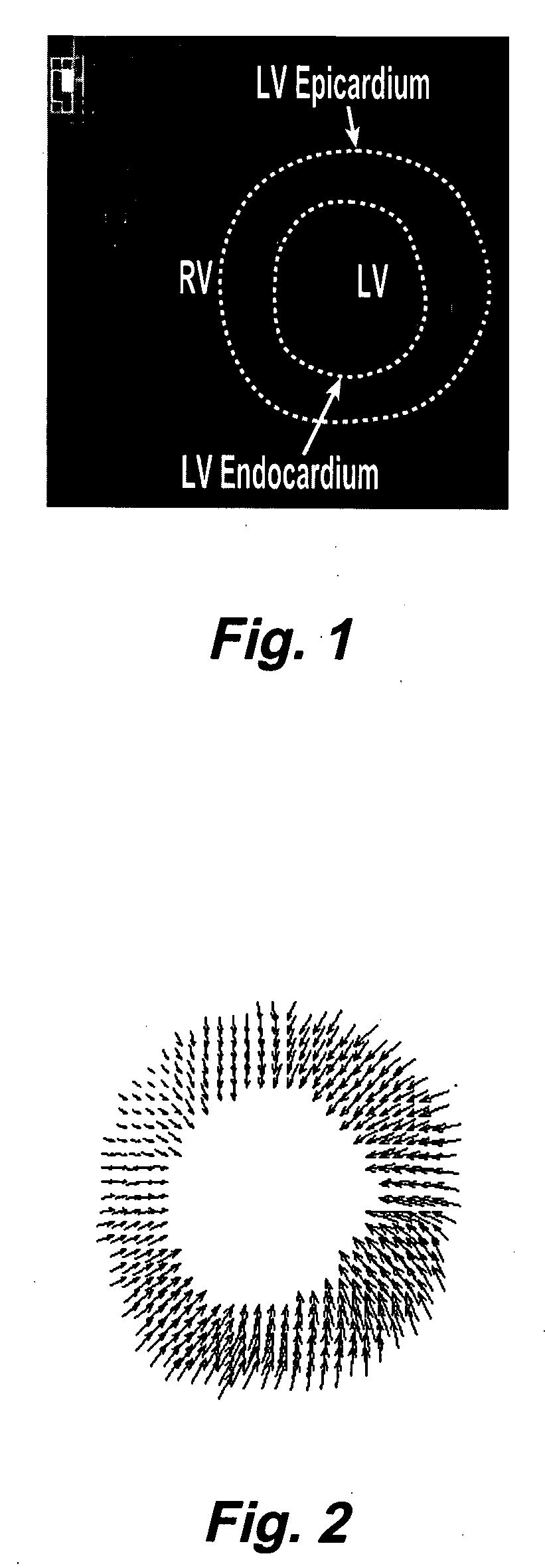Motion-guided segmentation for cine dense images
a motion-guided segmentation and image technology, applied in the field of myocardial tissue tracking, can solve the problems of lack of automation in clinical use of automated myocardial contour detection techniques based on image intensity, no segmentation algorithm currently exists for cine dense,
- Summary
- Abstract
- Description
- Claims
- Application Information
AI Technical Summary
Benefits of technology
Problems solved by technology
Method used
Image
Examples
Embodiment Construction
[0033] DENSE uses the phase of the stimulated echo to monitor myocardial motion and deformation at a pixel resolution. The magnetization is initially position encoded using a 1-1 spatial modulation of magnetization (SPAMM) tagging sequence, which is typically applied at end-diastole. Displacement is then accrued as a phase shift during the time between the SPAMM sequence and readout, resulting in images with phase proportional to displacement. Cine DENSE (see, e.g., Kim, D., Gilson, W., Kramer, C., Epstein, F., “Myocardial tissue tracking with two-dimensional cine displacement-encoded MR imaging: Development and initial evaluation,”Radiology 230, 862-871, 2004) provides a time series of such displacement measurements.
[0034] Cine DENSE allows for displacement encoding in any direction, but 2 or 3 orthogonally encoded directions are typically applied. Since only the final phase accrual of the spins is measured, MRI phase is inherently confined to the range−πIEEE Transactions on Medic...
PUM
 Login to View More
Login to View More Abstract
Description
Claims
Application Information
 Login to View More
Login to View More - R&D
- Intellectual Property
- Life Sciences
- Materials
- Tech Scout
- Unparalleled Data Quality
- Higher Quality Content
- 60% Fewer Hallucinations
Browse by: Latest US Patents, China's latest patents, Technical Efficacy Thesaurus, Application Domain, Technology Topic, Popular Technical Reports.
© 2025 PatSnap. All rights reserved.Legal|Privacy policy|Modern Slavery Act Transparency Statement|Sitemap|About US| Contact US: help@patsnap.com



